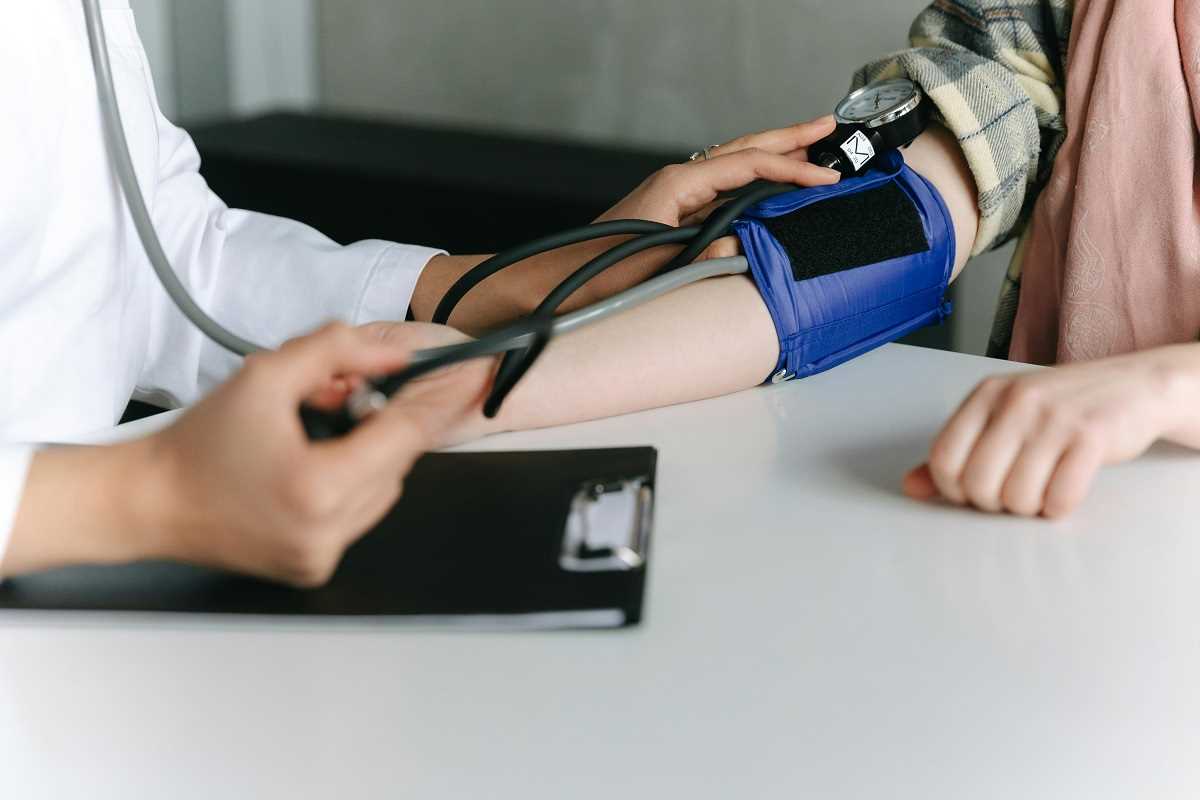Diabetes is a chronic health condition that affects millions of people worldwide. High blood sugar levels primarily characterize it over an extended period, which can lead to complications if not properly managed. Early detection and intervention play a crucial role in managing the disease effectively and preventing serious health issues such as heart disease, kidney damage, and nerve problems. Awareness of the early signs of diabetes and understanding how to respond can significantly improve both short-term and long-term health outcomes. This article will guide you through recognizing the initial symptoms of diabetes and provide insight into the steps you can take for early intervention and prevention.
Understanding Diabetes
Diabetes is a metabolic disorder that occurs when the body is unable to produce enough insulin or effectively use the insulin it does produce. Insulin is a hormone the pancreas produces that helps regulate blood sugar levels. There are two primary types of diabetes: Type 1 and Type 2.
- Type 1 diabetes is an autoimmune condition where the body’s immune system attacks the insulin-producing cells in the pancreas. This form of diabetes typically develops in childhood or adolescence and is less common than Type 2 diabetes.
- Type 2 diabetes is more prevalent and is often associated with lifestyle factors. It occurs when the body becomes resistant to insulin, meaning the pancreas produces insulin, but the body cannot effectively use it. This results in high blood sugar levels. Type 2 diabetes usually develops over time and is often diagnosed in adulthood, though it is increasingly being seen in younger populations due to rising rates of obesity and sedentary lifestyles.
Recognizing the Early Symptoms of Diabetes
Identifying the early signs of diabetes can help in seeking timely medical advice and preventing complications. While some symptoms may seem subtle, others can appear suddenly and worsen if left unchecked. The following are some of the common early signs of diabetes:
- Increased Thirst and Urination: High blood sugar levels cause the kidneys to work overtime to filter and absorb excess glucose, leading to frequent urination. This, in turn, can lead to dehydration, which triggers intense thirst. If you drink more fluids than usual but still feel thirsty, it could be a sign of diabetes.
- Fatigue: When the body is unable to use glucose for energy due to insulin resistance or inadequate insulin production, it can leave you feeling unusually tired or lethargic. This persistent fatigue can be especially noticeable after meals or throughout the day.
- Unexplained Weight Loss: Despite eating normally, people with diabetes may experience unexplained weight loss. This happens because the body starts to break down fat and muscle tissue to obtain energy when it is unable to use glucose effectively. This weight loss can be gradual or rapid and may be accompanied by feelings of weakness.
- Blurred Vision: High blood sugar levels can cause eye lenses to swell, leading to blurry vision. If you find your vision fluctuating or becoming consistently blurry, it may be a result of undiagnosed diabetes. Blurring vision can also be a sign of diabetic retinopathy, a serious condition that can cause vision loss over time if not addressed.
- Persistent Hunger: Another common symptom of diabetes is feeling hungry even after eating. This occurs because the body is unable to absorb enough glucose into the cells, leaving you feeling constantly hungry as your body tries to compensate for the lack of energy.
- Slow-Healing Wounds: People with high blood sugar levels often experience poor circulation and a weakened immune system. This can lead to slow-healing wounds and frequent infections. If you notice that cuts, bruises, or sores take much longer than usual to heal, it could be a sign of diabetes.
Risk Factors for Diabetes
While anyone can develop diabetes, certain factors can increase your risk of developing the condition. Understanding these risk factors can help you assess your diabetes risk and take preventive measures.
- Family History: If a close family member, such as a parent or sibling, has diabetes, your risk of developing the condition is higher. Genetics plays a role in the development of both Type 1 and Type 2 diabetes.
- Obesity: Excess weight, especially abdominal fat, is one of the leading risk factors for Type 2 diabetes. Obesity increases insulin resistance, making it harder for the body to use insulin effectively. A healthy body weight can help prevent or manage diabetes.
- Sedentary Lifestyle: Physical inactivity contributes to weight gain and insulin resistance. Regular physical activity can help the body use insulin more effectively and lower blood sugar levels. Even small changes like walking more or incorporating regular exercise into your routine can have a positive impact.
- Age: The risk of developing Type 2 diabetes increases with age, particularly after the age of 45. However, Type 2 diabetes is increasingly being diagnosed in younger adults, teens, and even children, especially with rising rates of childhood obesity.
- Ethnicity: Certain ethnic groups, such as African-Americans, Hispanics, Native Americans, and Asians, are at a higher risk of developing diabetes, especially Type 2 diabetes. Genetics, lifestyle factors, and diet play a role in these increased risks.
- High Blood Pressure and Cholesterol Levels: People with high blood pressure and elevated cholesterol are more likely to develop Type 2 diabetes. These conditions often go hand in hand with insulin resistance, further increasing the risk of diabetes.
Steps to Take if You Suspect Diabetes
If you recognize any of the early signs of diabetes, it is important to take prompt action. The sooner you seek medical attention, the sooner you can begin managing the condition and reducing the risk of complications. Here are the steps you should take:
- Consult a Healthcare Professional: If you suspect you may have diabetes, schedule an appointment with your doctor. They will perform a physical examination and may recommend a blood test to measure your blood glucose levels. The most common tests used to diagnose diabetes include the fasting blood glucose test, the HbA1c test, and the oral glucose tolerance test.
- Monitor Blood Sugar Levels: If your doctor diagnoses you with prediabetes or diabetes, they may recommend monitoring your blood sugar levels regularly. Some individuals are advised to use a home glucose monitoring kit, which allows them to check their blood sugar levels throughout the day. Tracking your levels can help you manage your condition more effectively and identify any patterns.
- Keep a Symptom Diary: It’s helpful to document any changes in your health, such as changes in thirst, urination, hunger, and energy levels. This diary can provide valuable insights to your healthcare provider and assist in making informed treatment decisions.
- Seek a Specialist: Depending on your diagnosis and needs, your doctor may refer you to an endocrinologist, a specialist in diabetes management. An endocrinologist can help you develop a personalized plan for managing your diabetes, which may include medications, lifestyle changes, and blood sugar monitoring.
Preventive Measures and Lifestyle Changes
Even if you don’t have diabetes, making certain lifestyle changes can help reduce your risk and promote overall health. Implementing these habits can help manage the condition if you’ve already been diagnosed with diabetes.
- Maintain a Healthy Diet: Eat a well-balanced diet that includes whole grains, lean proteins, healthy fats, and plenty of vegetables and fruits. Limit the intake of processed foods, sugary snacks, and beverages. Eating a diet rich in fiber can help regulate blood sugar levels and improve insulin sensitivity.
- Exercise Regularly: Physical activity is one of the most effective ways to prevent and manage diabetes. Aim for at least 150 minutes of moderate-intensity exercise or 75 minutes of vigorous activity each week. Regular exercise helps maintain a healthy weight and improves the body’s ability to use insulin.
- Monitor Your Weight: Achieving and maintaining a healthy weight can significantly reduce the risk of Type 2 diabetes. Even a modest weight loss of 5-10% of your body weight can have a positive impact on blood sugar control.
- Stay Hydrated: Drinking plenty of water is essential for overall health and can help control blood sugar levels. Avoid sugary drinks, which can cause blood sugar spikes.
- Quit Smoking and Limit Alcohol: Smoking increases insulin resistance, while excessive alcohol consumption can disrupt blood sugar regulation. Quitting smoking and drinking in moderation can improve your overall health and lower your risk of diabetes.
- Regular Health Check-Ups: Regular medical check-ups are essential for monitoring your blood sugar levels, blood pressure, and overall health. Early detection of risk factors and lifestyle changes can help prevent the onset of diabetes.
 (Image via
(Image via





